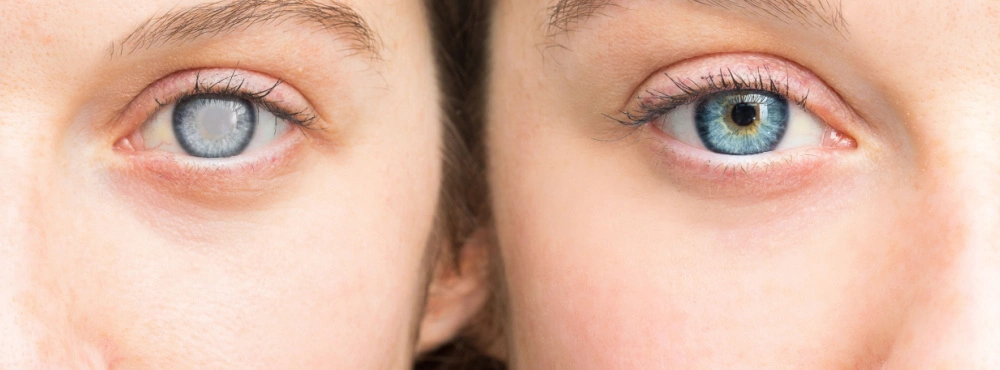
 Offers
Offers-
 Account
Account
-
0
 Favorite
Favorite
-
0
 Basket
Basket



Cataract is a common eye condition that affects millions of people worldwide. This condition is characterised by the clouding of the eye's natural lens, which can lead to blurred or distorted vision. The lens, which is normally clear, becomes opaque due to the buildup of protein, hindering the passage of light and affecting vision.
Cataracts develop gradually with age and may take years before they start to affect vision. The progression of cataracts can vary from person to person, and it's difficult to predict how fast they'll develop. In some cases, cataracts may not even require treatment, and people may continue to live with them without experiencing any significant vision loss.
Cataracts are commonly seen among older people, while some cases of cataracts can be found in children as well.
Cataracts are most common among people over 40. As we grow old, the lenses of our eyes can start becoming frosted, limiting our field of vision and the ability to see. When you are young, the lens of your eye is clear and allows you to see things with clarity. However, as you age, the proteins in the lens of your eye start to break down and clump together, making your lenses cloudy. As time passes, the cataract becomes more severe, causing your lens to be clouded.
Cataracts primarily occur in older adults, but it is possible for babies to be born with them. Children can also develop cataracts at an early age, which are referred to as childhood cataracts. According to the NHS, cataracts are not that common in babies and children. About 3 to 4 out of every 10,000 babies are born with cataracts in the UK.
Here are some of the most common observed signs and symptoms of cataracts:
The main cause of cataracts is the natural ageing process. When the proteins in the eye lens clump together as we age, it leads to clouding of the lenses. However, other factors contribute to cataract development, including:
Different types of cataracts include:
While there is no cure for cataracts, they can be treated through surgery. Cataract surgery involves removing the cloudy lens and replacing it with an artificial intraocular lens (IOL). The procedure is safe and effective and has a high success rate in restoring clear vision.
Cataract surgery is the most common and effective treatment for cataracts. Cataract surgery is a quick and easy procedure that takes 30-45 minutes. It involves a small incision in the eye to remove the cloudy lens and replace it with a clear plastic lens. Typically done as a day surgery under local anaesthetic, you should be able to go home the same day.
While getting your cataract surgery with the NHS, you'll usually be offered monofocal lenses, which has a single point of focus. This means the lens will be fixed for either near or distance vision, but not both. If you go private, you may be able to choose either a multifocal or an accommodating lens, which allows the eye to focus on both near and distant objects.
While some risk factors, such as age and genetics, are beyond our control, there are steps to reduce the risk of cataract and slow its progression: